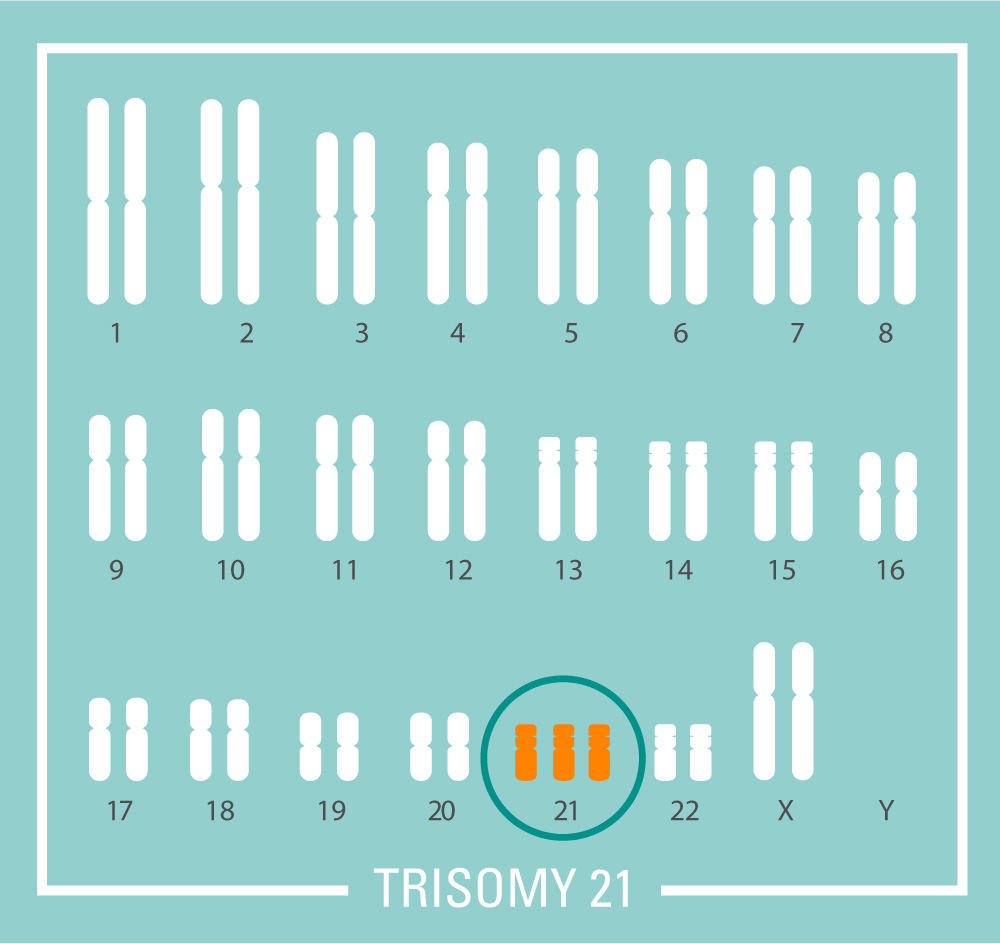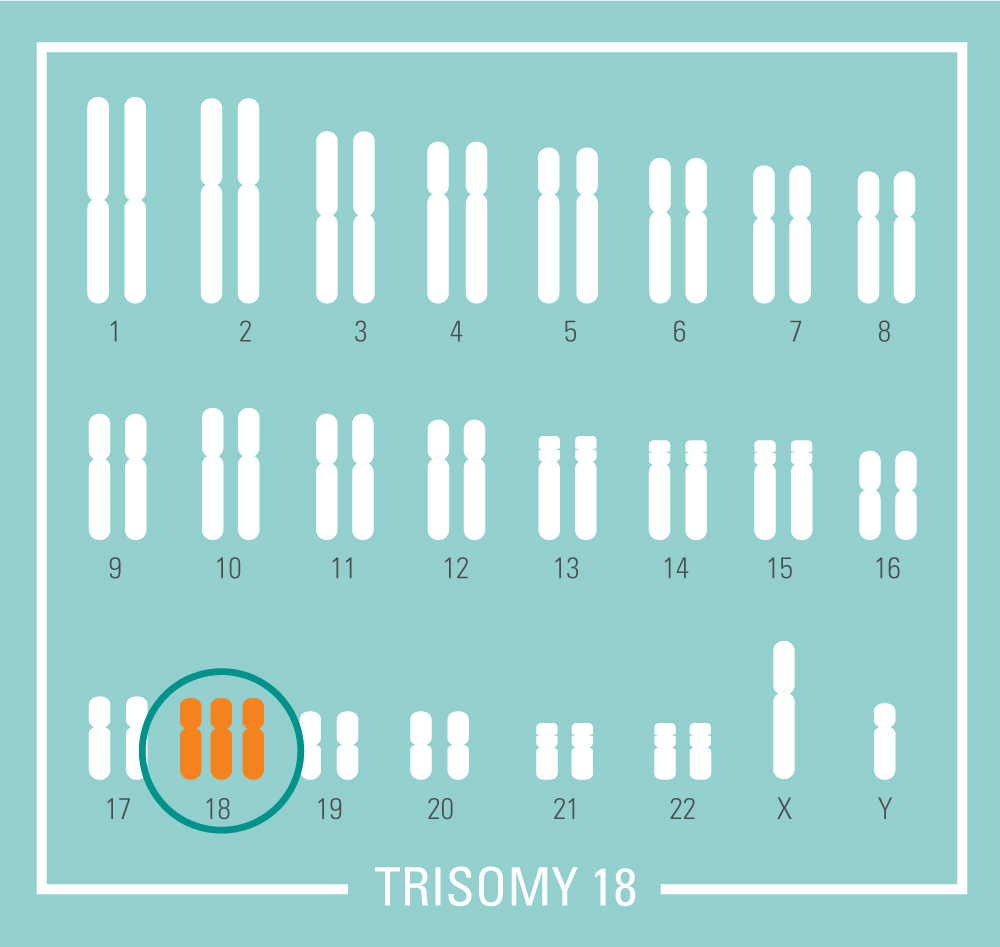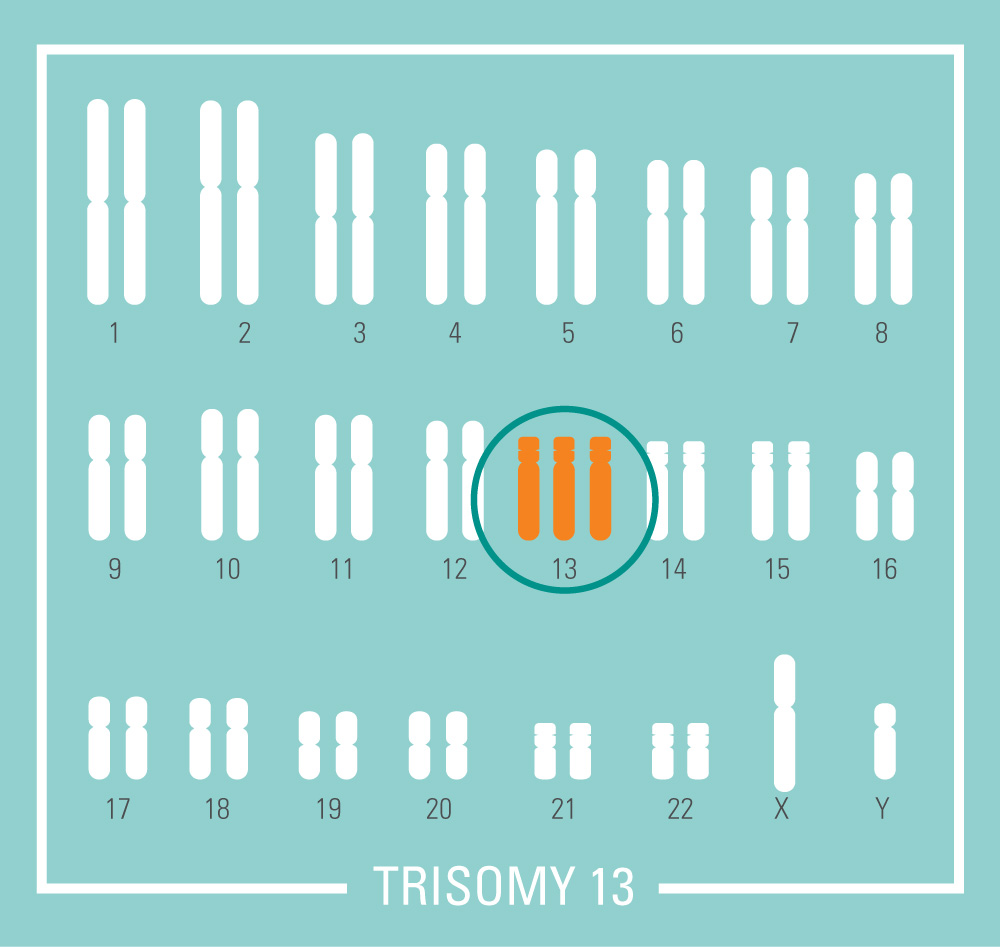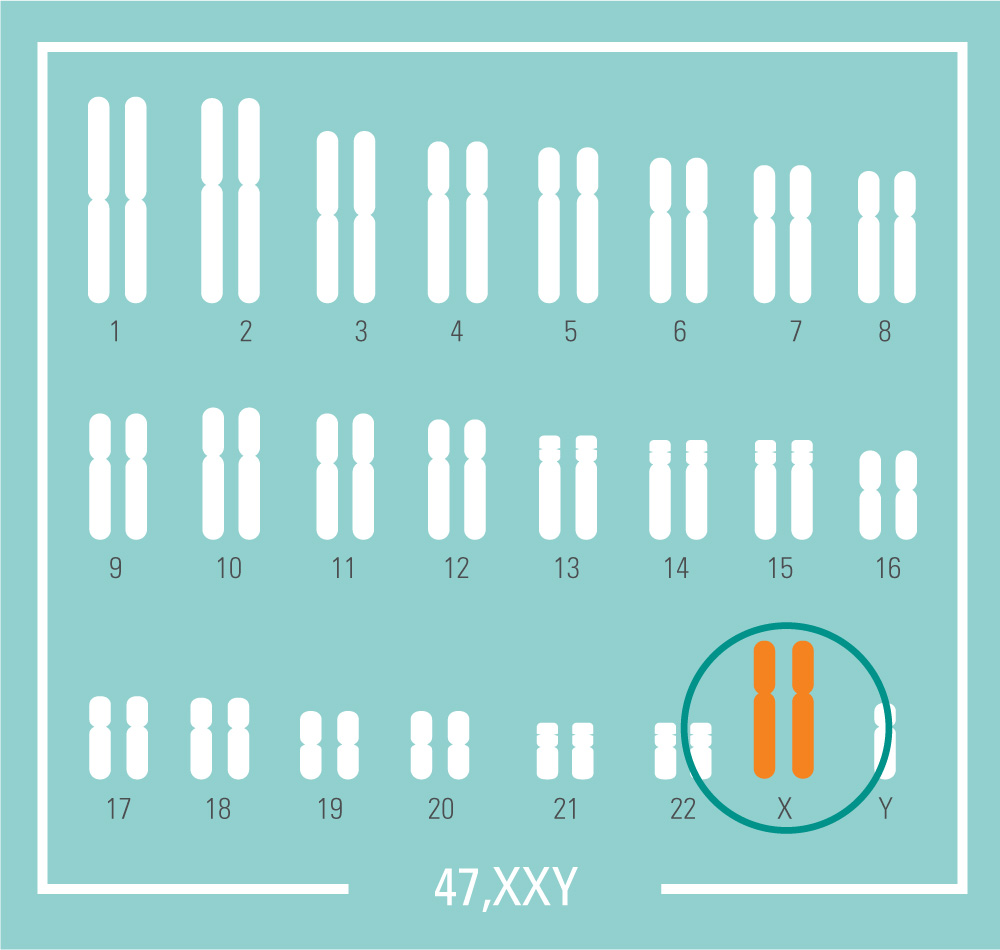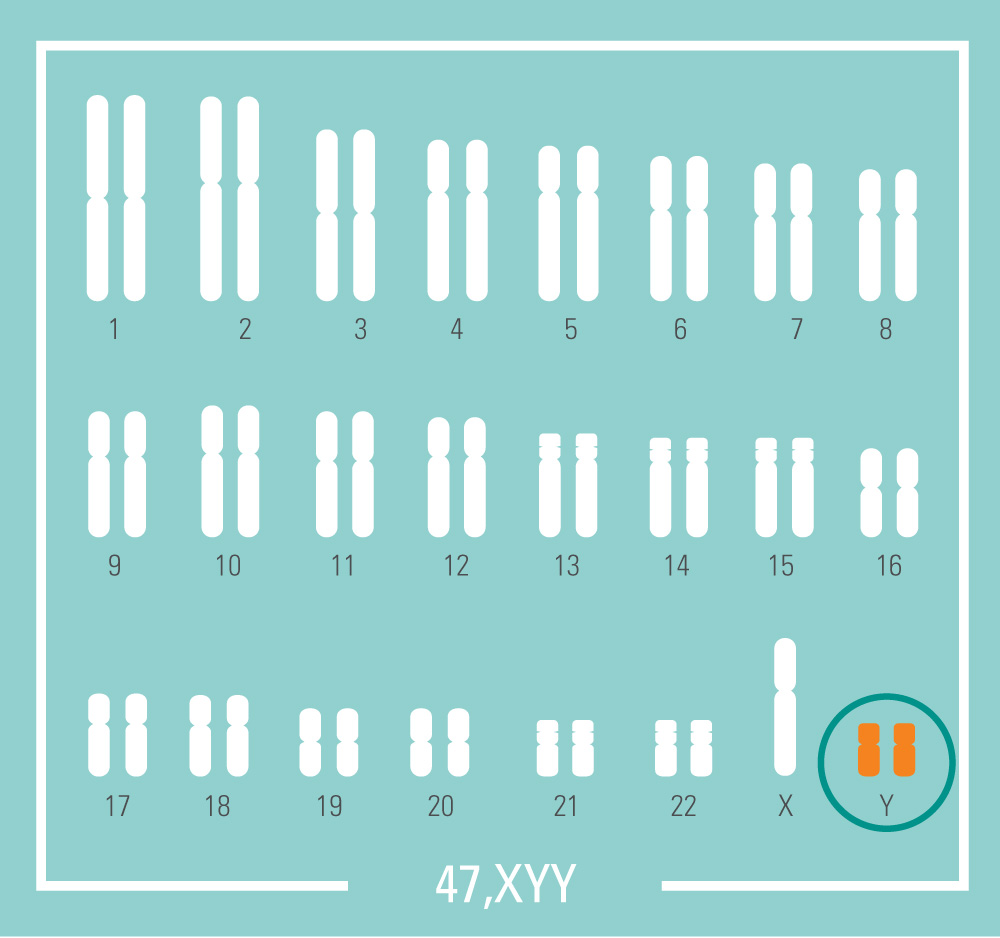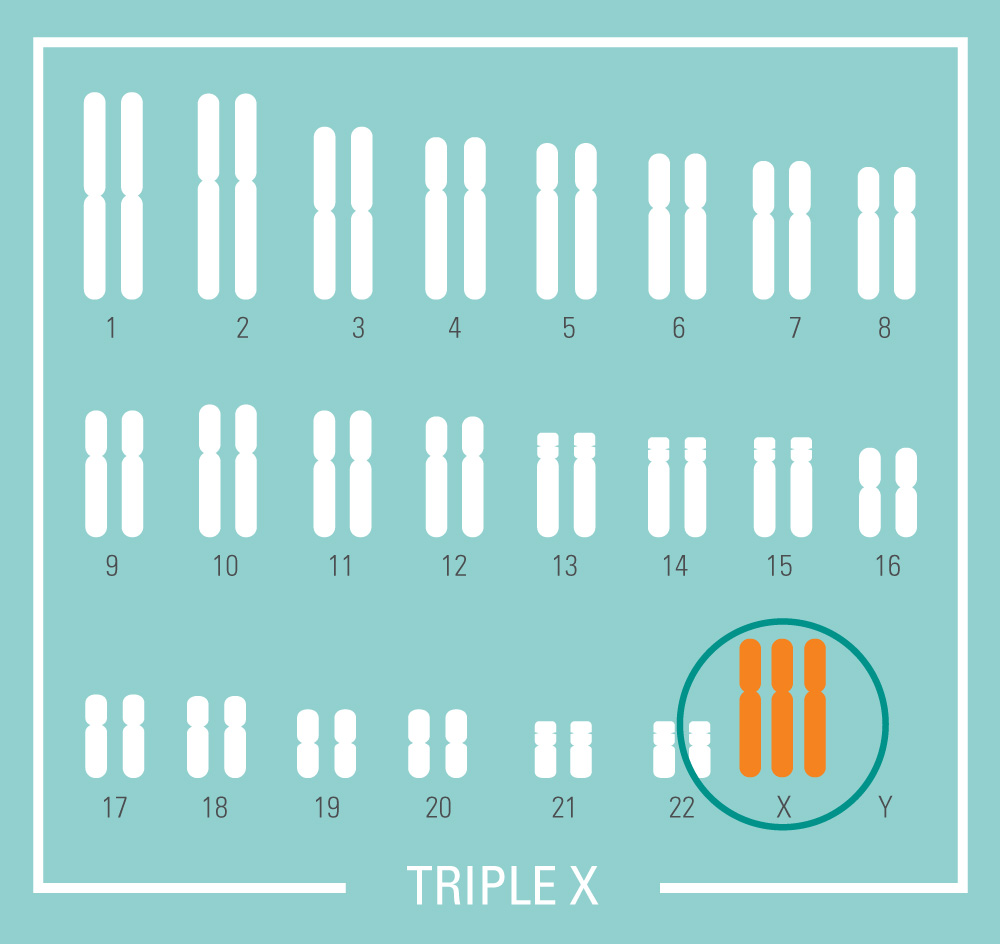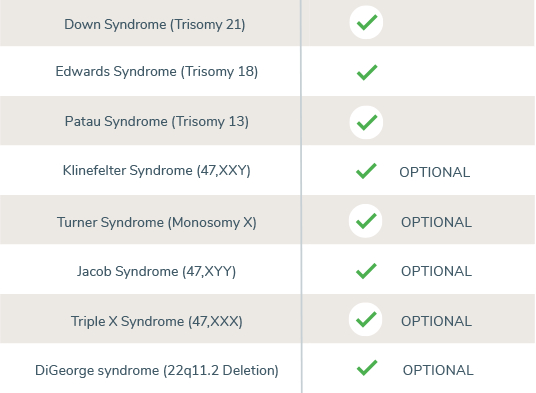
What does Harmony screen for?
Harmony is viewed as a reliable screening test and can be seen as the first universal tier antenatal screening test for the most common chromosomal conditions – making up approximately 80% of all chromosomal conditions. Please see table for a summary of the key abnormalities that are screened by Harmony.
The chromosomal conditions that Harmony screens for can be broken down into trisomies, sex chromosome aneuploidies and microdeletions.
Trisomies
Trisomy is the word used to describe the presence of an extra chromosome in the cells. The Harmony test looks for trisomy 21 (Down syndrome), trisomy 18 (Edwards syndrome) and trisomy 13 (Patau syndrome).
Sex Chromosome Aneuploidies
Sex chromosome aneuploidies (SCA) occur when there are changes in the expected number of the chromosomes associated with sex, the X and Y chromosomes. The most common sex chromosome aneuploidies are Klinefelter syndrome, Triple X syndrome, Jacob’s syndrome and Turner syndrome.
People with sex chromosome aneuploidies are sometimes mosaic, meaning they have some cells that have the sex chromosome aneuploidy and some cells that have the expected number of chromosomes. Mosaicism can affect the severity of the phenotype and can also make accurate testing more difficult. People with sex chromosome aneuploidies generally have relatively few physical or intellectual changes and many people with sex chromosome aneuploidies are never diagnosed because they do not have any clinical symptoms.
NIPT for SCA testing also has a lower positive predictive value (PPV) than testing for the common trisomies (Down syndrome, Edwards syndrome and Patau syndrome). This means there is a lower chance a woman who receives a high probability result is actually carrying a baby with a SCA. This can result in unnecessary anxiety for the pregnant woman and her family. For these reasons, consideration should be given before selecting this additional testing option and appropriate pre and post-test genetic counselling should be provided.
If you require additional information about testing or need to discuss a patient, please contact:
Assoc. Prof. Mirette Saad on P: (03) 9538 6777 or E: Mirette.Saad@clinicallabs.com.au.


